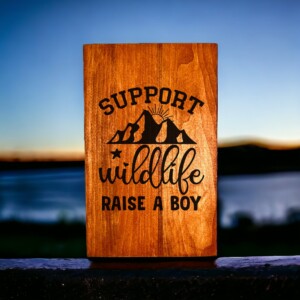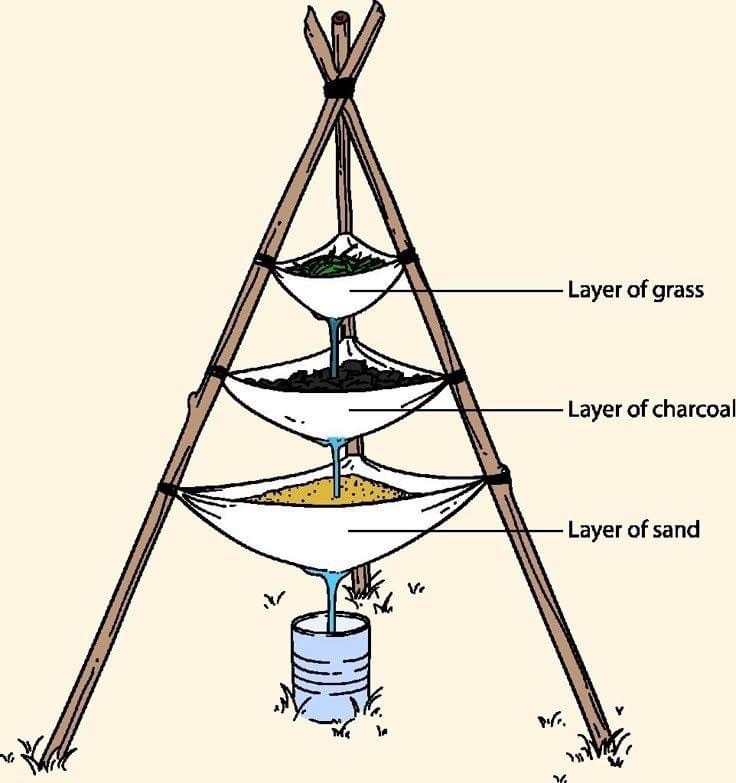
Why Water Purification is Essential for Survival
When it comes to survival, water is priority #1. You can last weeks without food, but without clean water, you might not make it past a few days. Finding water in the wild is one thing, but drinking unpurified water can be just as dangerous as having none at all. Streams, lakes, and even rainwater can be filled with bacteria, parasites, and chemical contaminants that can make you seriously sick—or worse.
The Hidden Dangers of Drinking Unfiltered Water
Many survivalists make the mistake of assuming that water from a flowing river or a clear pond is safe to drink. Big mistake. Even the cleanest-looking water could be carrying harmful pathogens like:
🚫 Giardia & Cryptosporidium – Cause severe diarrhea, dehydration, and weakness
🚫 E. coli & Salmonella – Lead to vomiting, stomach cramps, and fever
🚫 Viruses like Hepatitis A – Found in contaminated water sources, can be life-threatening
🚫 Heavy Metals & Chemicals – Pesticides, industrial waste, and natural minerals can poison you
Common Water Sources in Survival Situations
In an emergency, you need to know where to find water and how to make it drinkable. Some of the most common sources include:
✔ Rivers & Streams – Running water is better than stagnant water, but still needs purification.
✔ Rainwater – One of the safest sources if collected correctly.
✔ Snow & Ice – Can be melted and filtered but may contain pollutants.
✔ Puddles & Swamps – Last resort water sources that require extra filtration.
✔ Tree Leaves & Plant Condensation – A good survival trick but yields limited amounts.
Without a way to purify water, you’re gambling with your health and survival. That’s why the best survival water purification system isn’t just something you should think about—it’s something you need to build or carry with you at all times.
Next, we’ll dive into what makes a survival water purification system effective and how to build your own DIY water filter using natural materials.
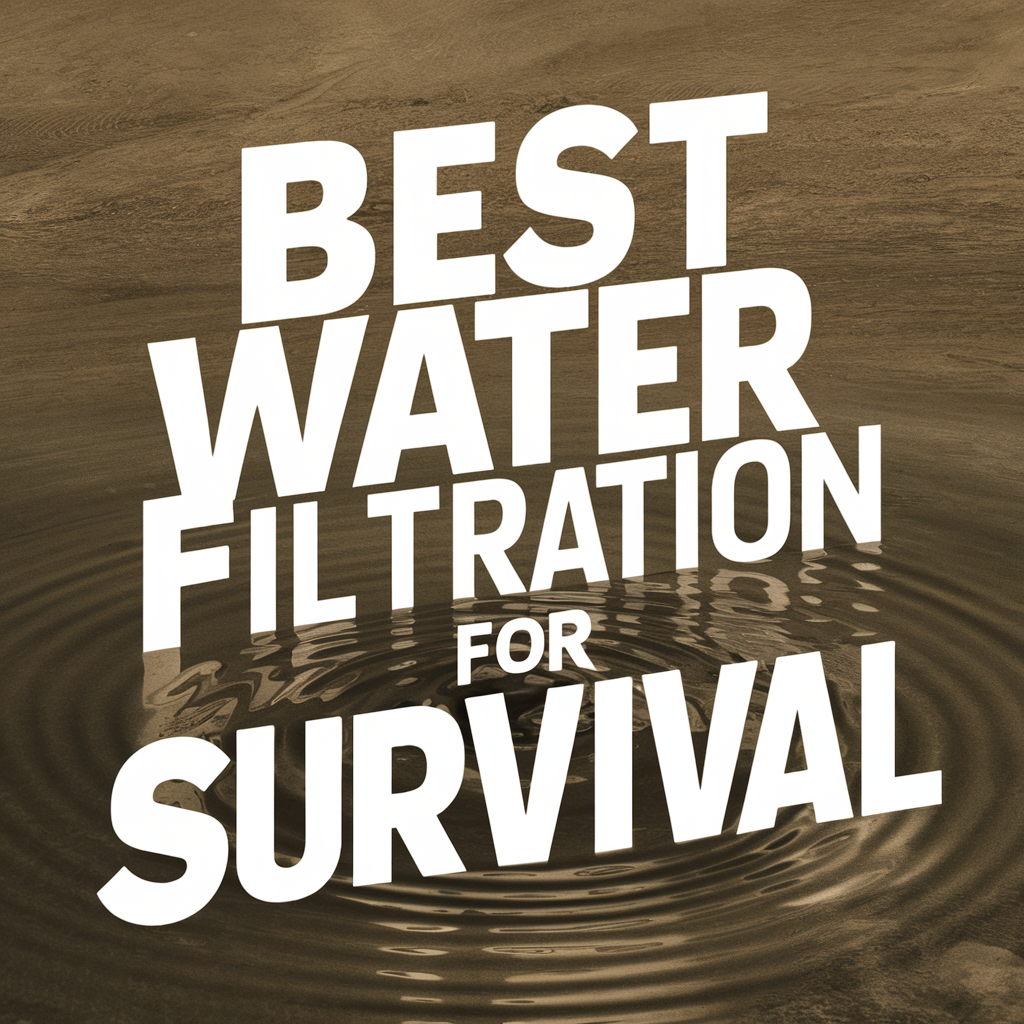
What is the Best Water Purification System for Survival?
Survival situations call for reliable, effective water purification. The best system depends on your environment, available resources, and how long you need to survive. While commercial filters are great, knowing how to build a DIY survival water purification system can be a lifesaver when you’re stuck in the wild.
What Makes a Water Purification System “The Best” for Survival?
A top-tier survival water purification system needs to:
✔ Remove bacteria, parasites, and viruses – Giardia, E. coli, and Cryptosporidium can turn a bad situation deadly fast.
✔ Filter out dirt, debris, and heavy metals – Clean-looking water isn’t always safe—micro-particles can be just as dangerous.
✔ Be easy to make in an emergency – You won’t always have a fancy filtration system, so knowing how to build one from natural materials is key.
✔ Work with different water sources – Whether you’re filtering stream water, rainwater, or even melting snow, the system should adapt.
Store-Bought vs. DIY Water Purification Systems
If you have access to a store-bought survival water filter, you’re already ahead. Some of the best options include:
- Gravity-fed filtration systems – Great for long-term survival camps.
- Portable water filters (like LifeStraw & Sawyer) – Good for emergency bug-out bags.
- Pump-style purifiers – Remove bacteria, chemicals, and viruses but require effort.
- Boiling – The simplest way to kill bacteria but doesn’t remove debris or chemicals.
👉 Check out the best water filtration tools for survival here.
Why You Need a Backup DIY Water Purification System
Even if you own the best survival water filter, things can go wrong.
- Filters can clog or break in rough conditions.
- Boiling requires fire and fuel, which may not always be available.
- You might get separated from your gear—a real danger in survival scenarios.
This is why knowing how to purify water with nothing but natural materials is one of the most valuable skills you can have. In the next section, we’ll break down exactly how to build your own DIY water purification system using grass, charcoal, and sand.
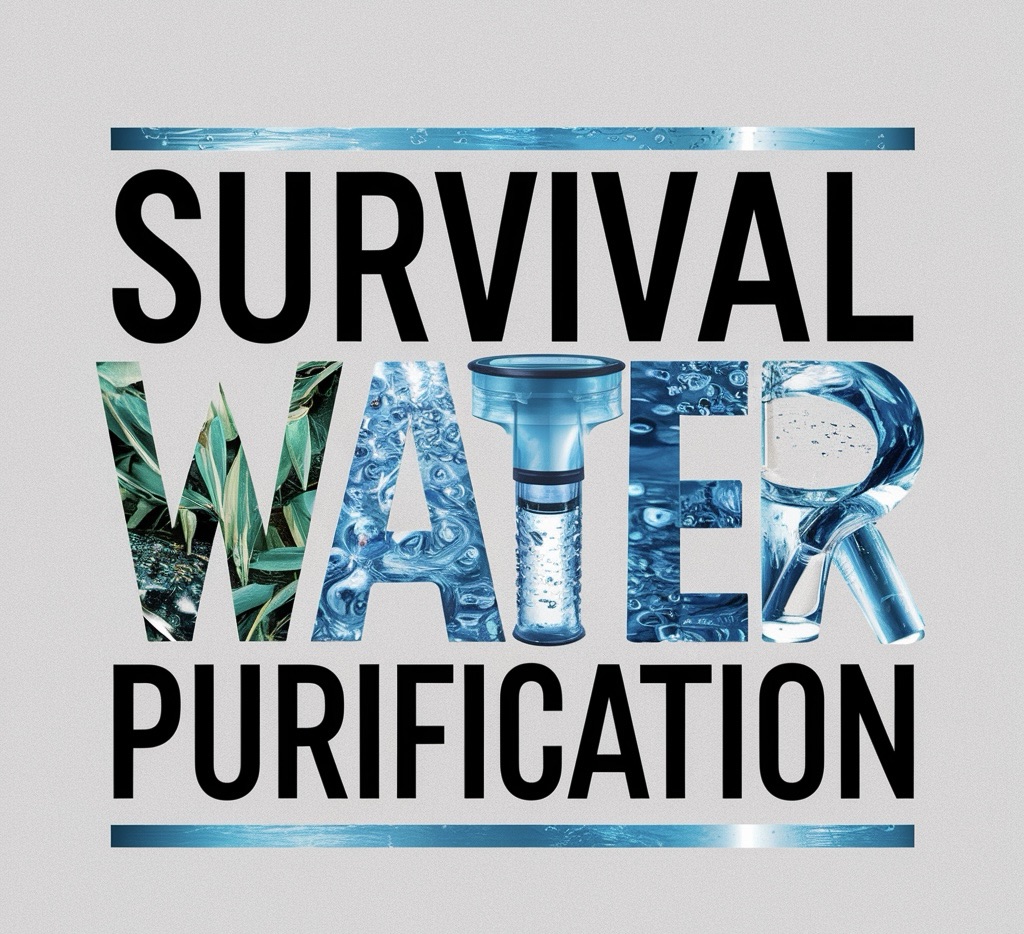
How to Make a DIY Survival Water Purification System
When you’re stranded in the wild without a water filter, you need a reliable way to clean water using natural materials. A DIY teepee-style water purification system is one of the best survival methods because it mimics nature’s filtration process—just like how rainwater gets purified as it moves through layers of soil, sand, and rock.
This layered filtration method removes dirt, debris, and some harmful bacteria, making water safer to drink when no other options are available.
Materials You Need
✅ Grass or Moss – Captures large debris, bugs, and dirt
✅ Charcoal – Absorbs chemicals, toxins, and some bacteria
✅ Sand – Traps finer particles and improves clarity
✅ Cloth or a container – To catch the filtered water at the bottom
Step-By-Step Guide to Building a Natural Water Filter
1️⃣ Build the Teepee Frame
Find three sturdy sticks and tie them together at the top to create a teepee-like stand. This will hold the filtration layers and keep them elevated for easy water collection.
2️⃣ Add a Layer of Grass or Moss
- This is the first filtration stage, removing bugs, leaves, and dirt from the water.
- Pack the bottom of your filter tightly with fresh green grass or moss—they act as a pre-filter.
3️⃣ Add a Thick Layer of Charcoal
- Crush charcoal from a campfire into small pieces and add it above the grass layer.
- Charcoal is crucial because it absorbs toxins, chemicals, and even some bacteria.
- Make sure it’s pure charcoal—don’t use burnt plastic, food waste, or treated wood.
4️⃣ Add a Layer of Sand
- Fine-grain sand helps trap smaller particles that slip through the charcoal.
- The best option is river or clean beach sand—avoid sand with visible pollutants.
- Pack it tightly to slow water flow, which improves filtration.
5️⃣ Pour the Water & Collect It at the Bottom
- Slowly pour dirty water into the top layer of your filter.
- Water will move through each layer, getting cleaner as it goes.
- Collect the filtered water in a container or cloth at the bottom.
Does This Method Make Water Completely Safe?
This DIY water filter removes debris, dirt, and some bacteria, but it’s not a 100% purification method. It’s always best to:
✔ Boil the water after filtering to kill any remaining bacteria or viruses.
✔ Let sunlight disinfect the water if you can’t boil it (solar purification).
✔ Use iodine tablets or chemical purifiers if available.
👉 Learn more about why water purification is critical for survival.
This natural filtration system is a game-changer for survivalists. Next, let’s explore how this method compares to the most effective homemade water filters.
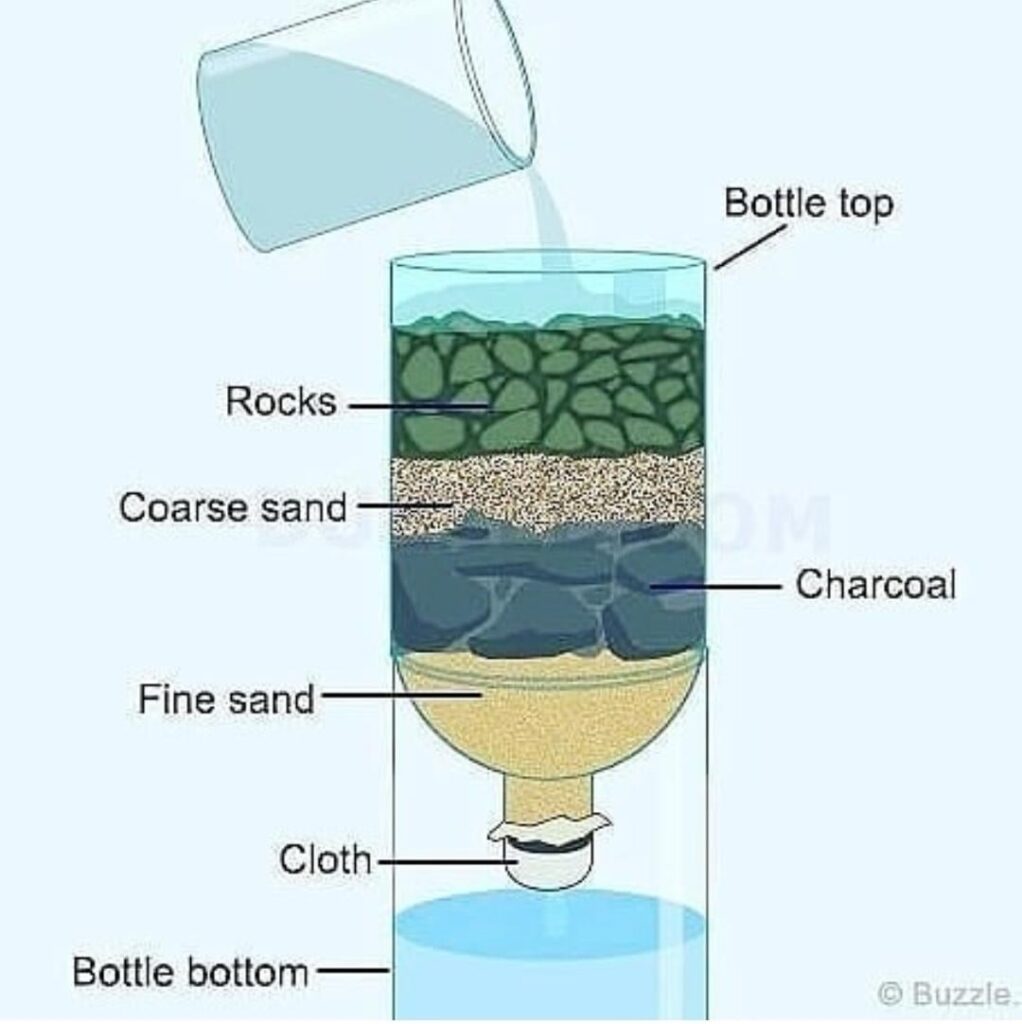
What is the Most Effective Homemade Water Filter?
While a DIY teepee-style water purification system using grass, charcoal, and sand is a great survival solution, it’s not the only homemade water filter option. Different filtration methods work better depending on your environment, available materials, and water source.
1️⃣ The Three-Layer Natural Filter (Grass, Charcoal, and Sand)
✔ Best for: Removing dirt, debris, and some bacteria when no gear is available.
✔ Pros: Can be built with natural materials, effective at improving water clarity.
✔ Cons: Does NOT remove all bacteria or viruses—water must still be boiled.
2️⃣ The Bottle Survival Water Filter
✔ Best for: Compact emergency situations when you have access to a plastic bottle.
✔ How it works: Cut the bottom off a plastic bottle, layer charcoal, sand, and gravel, and pour dirty water through.
✔ Pros: Simple, portable, and effective in filtering large debris.
✔ Cons: Like the teepee filter, this method doesn’t remove all pathogens.
3️⃣ The Boiling Method (Most Reliable for Killing Pathogens)
✔ Best for: When you have access to fire and a metal container.
✔ How it works: Bring water to a rolling boil for at least one minute (or three minutes at high altitudes).
✔ Pros: Kills ALL bacteria, viruses, and parasites.
✔ Cons: Doesn’t filter out debris, chemicals, or heavy metals.
4️⃣ Solar Purification (Using the Sun to Kill Bacteria)
✔ Best for: Long-term survival situations where fire isn’t an option.
✔ How it works: Pour water into a clear plastic bottle and leave it in direct sunlight for 6+ hours—the UV rays kill bacteria and viruses.
✔ Pros: Doesn’t require fire or chemicals, works in sunny climates.
✔ Cons: Not effective in cloudy weather or with highly contaminated water.
👉 For more survival water filtration tips, check out this guide.
Which DIY Water Purification System is Best?
The best homemade water filter depends on your survival situation.
- Need a fast, effective way to purify water? Boiling is your best bet.
- No fire? Use solar purification or chemical treatments.
- Need to remove dirt and debris first? A three-layer natural filter is a great starting point.
The best survivalists don’t rely on just one method—they layer multiple techniques to ensure the safest, cleanest drinking water possible.
Next, let’s explore how to filter water in the wilderness using other natural materials and techniques.

How to Filter Water in the Wilderness Using Natural Materials
When you’re out in the wild, access to clean drinking water can make or break your survival. If you don’t have a store-bought filter, you’ll need to rely on nature to help purify your water.
1️⃣ Collecting Water from the Cleanest Sources
Before filtering, choose the safest water source possible to minimize contamination. The cleaner your starting water, the easier it is to purify.
✔ Best Water Sources:
- Flowing streams & rivers – Moving water is less likely to contain bacteria than stagnant ponds.
- Rainwater – One of the safest sources if collected properly.
- Morning dew & tree leaves – Can be gathered using a cloth and squeezed into a container.
🚫 Avoid These Sources Unless Desperate:
- Stagnant ponds & lakes – High bacteria risk.
- Swamp water – Filled with organic waste and pathogens.
- Snow & ice – Safe if melted properly but can contain pollutants.
👉 Learn more about emergency water sources and filtration here.
2️⃣ Building a Wilderness Water Filter
If no store-bought filter is available, you can build a simple survival water filter using natural materials.
✔ Materials Needed:
- Large leaf or cloth for catching water
- Sticks or a hollow log to create a funnel
- Sand, charcoal, and grass or moss for filtering
- A container to collect purified water
🔧 Step-by-Step Process:
- Construct a filter using layers of grass, charcoal, and sand inside a hollow log or cloth funnel.
- Slowly pour water through each layer—grass removes debris, charcoal absorbs toxins, and sand filters finer particles.
- Collect the filtered water in a clean container at the bottom.
- Boil or use solar purification for additional safety.
This method removes most debris and some bacteria, but boiling is still necessary to ensure safety.
3️⃣ Alternative Wilderness Water Filtration Techniques
🔥 Boiling – The most effective way to kill bacteria. Always boil water for at least 1 minute (or 3 minutes at high altitudes).
🌞 Solar Purification – Place water in a clear bottle and leave it in direct sunlight for 6+ hours to let UV rays kill bacteria.
🌿 Tree Branch Filtration – Birch and pine tree branches naturally absorb bacteria from water when used as a filter.
🪨 Rock & Sand Filtration – Pour water through layers of fine sand, gravel, and charcoal to improve clarity and taste.
4️⃣ Adding an Extra Layer of Protection
Even after filtering, some harmful contaminants can remain in your water. If you have access to:
✔ Iodine tablets or chlorine drops – These kill bacteria but may leave an aftertaste.
✔ Emergency water packets – A great survival backup to carry with you.
✔ Activated carbon – Helps absorb chemicals and toxins.
👉 Stock up on emergency water packets here.
Survival Water Filtration: Knowledge is Your Best Tool
In survival situations, knowing multiple ways to purify water can save your life. Whether you build a natural filter, boil your water, or use solar purification, the key is understanding which method works best depending on your environment.
Next, let’s explore what water purifiers the military uses and how survivalists can apply the same strategies.
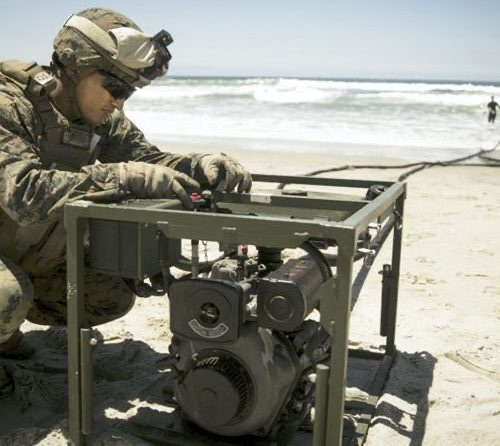
What Water Purifier Does the Military Use?
The military doesn’t take chances when it comes to safe drinking water in extreme conditions. Whether deployed in the desert, jungle, or urban warfare zones, soldiers need fast, reliable water purification systems that work anywhere.
1️⃣ Military-Grade Water Filtration Systems
The U.S. military and NATO forces use a combination of portable and large-scale purification methods, depending on the mission.
✔ Individual Water Purification Systems:
- MSR Guardian Purifier – A high-end military-grade filter that removes viruses, bacteria, and protozoa.
- Aquamira Water Treatment Drops – A lightweight chemical purifier used by special forces.
- Personal UV Sterilizers – Small, battery-powered devices that zap bacteria and viruses using UV light.
✔ Field & Tactical Water Purification Units:
- ROWPU (Reverse Osmosis Water Purification Unit) – Used for large-scale purification in war zones.
- LWP (Lightweight Water Purifier) – Used by the Army for on-the-move purification.
These systems aren’t just about filtering dirt—they remove chemical contaminants, biological threats, and heavy metals.
2️⃣ Can You Use Military-Grade Water Purifiers for Survival?
Yes! Many military-grade purifiers are available to civilians, and survivalists often use the same technology for emergency preparedness.
🔹 Best Military-Grade Water Filters for Survivalists:
✔ Sawyer Mini Water Filter – Ultra-lightweight, filters 100,000 gallons of water.
✔ LifeStraw – Used in humanitarian efforts, removes bacteria and parasites.
✔ MSR Guardian – Same-grade tech as the military, but expensive.
👉 For more survival water filtration options, check out this guide.
3️⃣ What Can Survivalists Learn from the Military?
If the military trusts reverse osmosis, activated carbon, and UV purification, it means those methods work under extreme conditions. Even if you don’t have a military-grade system, you can mimic their strategies in the wild:
🔹 Use charcoal filtration to remove contaminants like a ROWPU unit.
🔹 Use UV purification (like the SteriPen) for viruses and bacteria.
🔹 Combine multiple purification steps—just like the military does in disaster zones.
Knowing how the military purifies water can help you choose the best survival methods for any situation. Next, we’ll explore how NASA handles water purification in space and what we can learn from it.
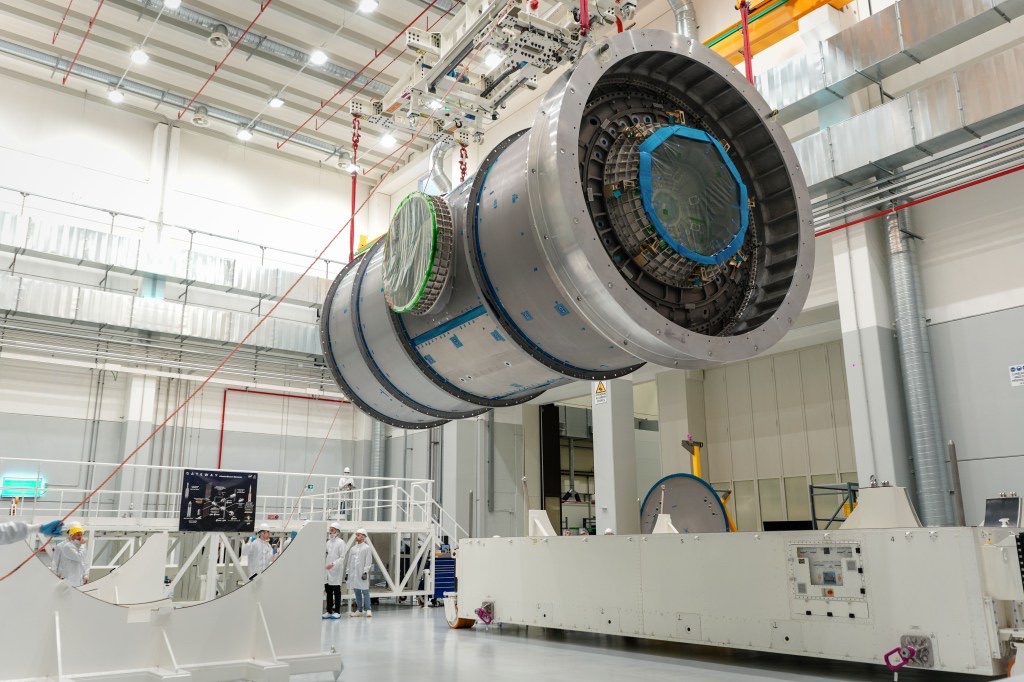
What Water Filtration System Does NASA Use?
When you’re floating in space, finding fresh water isn’t an option—which means NASA had to develop one of the most advanced water purification systems on the planet (and beyond). The technology they use isn’t just for astronauts—it’s now being applied to survivalist water filtration on Earth.
1️⃣ NASA’s Water Recovery System (WRS)
NASA’s Water Recovery System (WRS) is used on the International Space Station (ISS) to recycle and purify water in an environment where every drop counts.
🚀 How NASA purifies water in space:
✔ Filtration & Reverse Osmosis – Removes large debris and contaminants.
✔ Distillation Process – Uses heat and pressure to remove impurities.
✔ Advanced Oxidation & UV Sterilization – Destroys bacteria and viruses.
✔ Wastewater Recycling – Yes, astronauts drink recycled urine, sweat, and condensation!
The result? Clean, drinkable water that’s 100% safe—even if it started as sweat or urine.
2️⃣ NASA Technology & Survival Water Filtration
NASA’s water purification systems are now used in disaster relief, military operations, and survival gear. Some of the best survival water filters use the same core technology:
✔ Reverse osmosis – Used in high-end survival filters to remove heavy metals and chemicals.
✔ UV purification – Found in SteriPen and other portable water treatment devices.
✔ Gravity-fed filtration – Similar to how NASA recycles water, many off-grid water systems use slow, multi-stage filtration.
👉 Find the best survival water purification systems here.
3️⃣ Could a NASA-Style Water Purification System Work in the Wild?
While you won’t have a space station filtration system in the woods, you can mimic NASA’s strategy by layering purification techniques.
🔹 Boiling removes bacteria and viruses.
🔹 Charcoal filtration absorbs chemicals and heavy metals.
🔹 Solar purification kills microbes using UV rays.
🔹 Reverse osmosis (if available) removes contaminants and salts.
NASA’s methods prove that no water source is truly undrinkable with the right technology—even waste can be turned into pure drinking water.
Next, let’s talk about why having emergency water sources and backup purification options is critical for survival.

Emergency Water Sources & Quick Purification Options
In a survival situation, you can’t always rely on finding a perfect water source. Whether you’re stranded in the wild, dealing with a natural disaster, or just preparing for emergencies, having backup water sources and fast purification methods is essential.
1️⃣ The Best Emergency Water Sources
If you’re running low on purified water, these are the safest emergency water sources to look for:
✔ Rainwater – Can be collected in tarps, leaves, or containers. One of the safest sources if purified properly.
✔ Snow & Ice – Must be melted and filtered before drinking. Avoid dirty or yellow snow.
✔ Tree Condensation – Tie a plastic bag around a leafy branch to collect water from plant transpiration.
✔ Morning Dew – Wipe blades of grass or leaves with a cloth and wring out the water.
✔ Underground Springs – Often cleaner than surface water but still needs purification.
🚫 Avoid stagnant ponds, swamp water, and unknown puddles unless you have no choice.
2️⃣ Fast Water Purification Methods for Emergencies
When you don’t have time to build a full survival filtration system, these quick purification methods can save your life.
🔥 Boiling (Most Reliable Method)
- Bring water to a rolling boil for 1 minute (or 3 minutes at high altitudes).
- Kills 99.9% of bacteria, viruses, and parasites.
💊 Chemical Purification (Iodine or Bleach)
- Iodine Tablets – Add 2 tablets per quart of water, wait 30 minutes.
- Household Bleach – Use 2 drops per quart of water, shake well, and wait 30 minutes.
🌞 Solar UV Purification
- Fill a clear plastic bottle with water and leave it in direct sunlight for 6+ hours.
- The UV rays kill bacteria and viruses, making the water safer to drink.
🚰 Emergency Water Packets & Filters
- Pre-packaged emergency water rations are great for survival kits.
- Portable filters like LifeStraw allow you to drink directly from natural water sources.
👉 Stock up on emergency water packets here.
3️⃣ Why You Should Always Have a Backup Water Plan
In survival situations, having multiple ways to purify water can mean the difference between life and death.
✔ Filters can clog or break.
✔ Fires for boiling may not always be possible.
✔ Natural water sources might be contaminated.
The best survivalists never rely on just one method—they prepare for every possible water crisis.
Next, we’ll wrap up with a final survival water purification checklist to ensure you’re always ready for the unexpected.
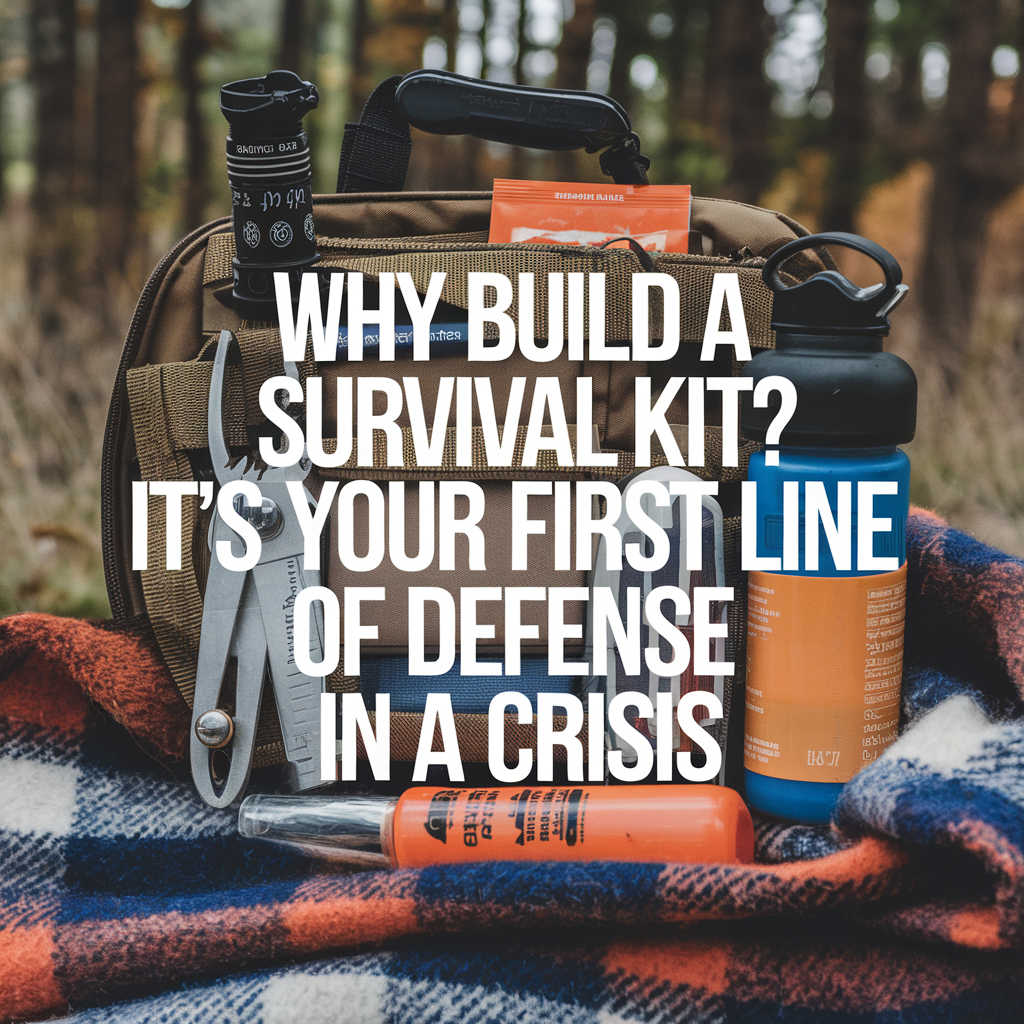
Final Survival Water Purification Checklist
When it comes to survival, water is everything. You can’t last more than a few days without it, and drinking contaminated water can be just as deadly as dehydration. The best way to stay alive is to always be prepared—whether that means building a DIY filtration system, boiling water, or carrying a backup purification method.
✅ Step 1: Know Your Water Sources
✔ Flowing rivers & streams – Best natural sources, but still need filtration.
✔ Rainwater collection – Safer than surface water, but should still be purified.
✔ Morning dew & tree condensation – Great for emergency hydration.
✔ Snow & ice – Must be melted and filtered to remove contaminants.
✔ Avoid stagnant ponds, swamps, and dirty puddles unless necessary.
👉 Learn how to find survival food alongside clean water.
✅ Step 2: Build a Reliable Filtration System
✔ DIY teepee water filter – Uses grass, charcoal, and sand for natural purification.
✔ Bottle survival filter – A simple way to filter water using a plastic bottle.
✔ Charcoal and sand layering – Absorbs contaminants and improves clarity.
🚨 Always boil filtered water or use chemical treatments for extra safety.
👉 Why water purification is essential in survival situations.
✅ Step 3: Have a Backup Water Purification Plan
✔ Boiling water – The easiest way to kill bacteria and viruses.
✔ Iodine tablets or bleach – Fast chemical purification in emergencies.
✔ Solar purification (UV light) – Kills bacteria using sunlight.
✔ Emergency water rations – Packaged water for survival kits.
👉 Stock up on emergency water packets for disaster preparedness.
✅ Step 4: Learn from the Pros
✔ The military uses multi-layer filtration and chemical treatments to ensure water safety.
✔ NASA recycles and purifies every drop of water in space—you can mimic their strategies with layered filtration.
✔ Survivalists combine multiple purification methods to eliminate all possible risks.

Always Be Prepared
The best survival water purification system isn’t just one method—it’s a combination of filtration, purification, and smart water sourcing. Whether you’re using a DIY natural filter, a high-tech water purifier, or simply boiling water over a fire, knowing how to stay hydrated safely is a survival skill you can’t afford to ignore.
🚨 No matter where you are, ALWAYS have a plan to access and purify water. It’s the single most important key to survival. Stay prepared, stay smart, and stay alive.
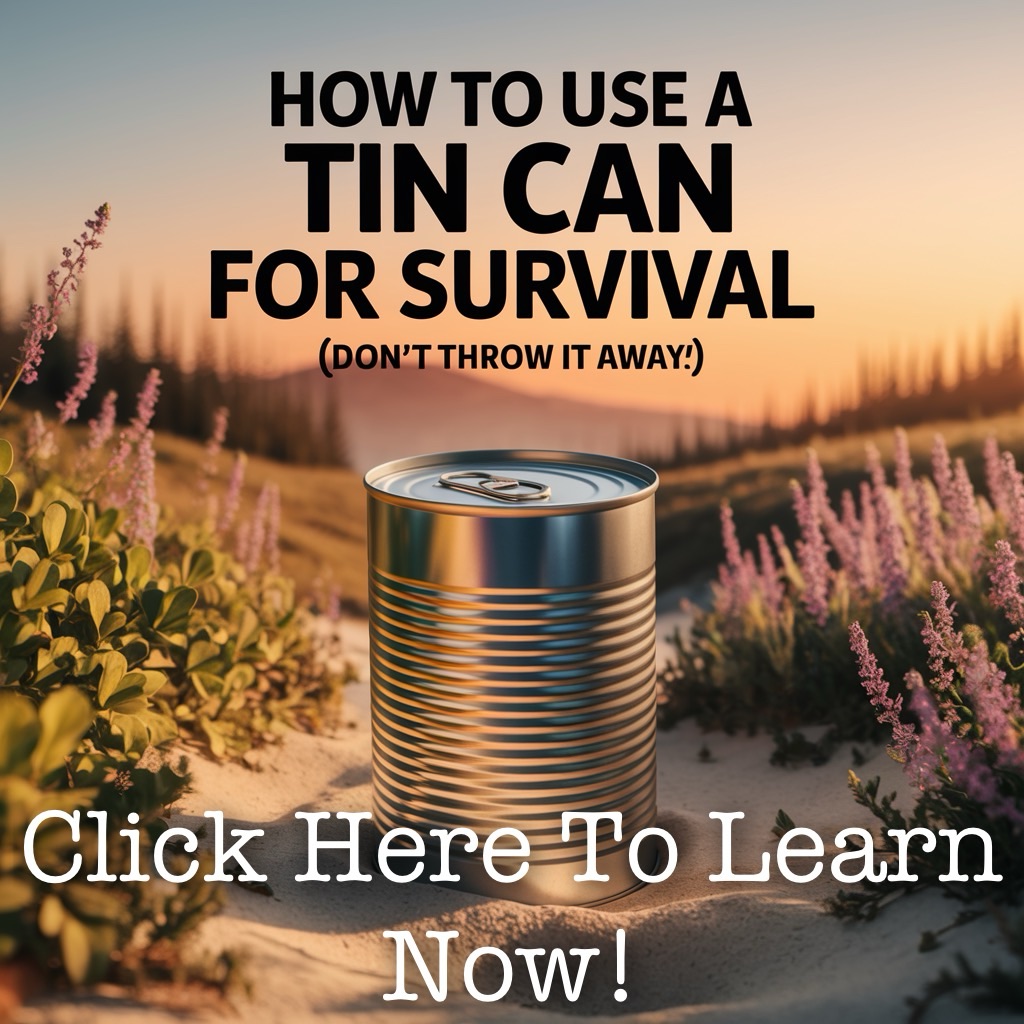
As an Amazon Associate we earn from qualifying purchases through some links in our articles.



